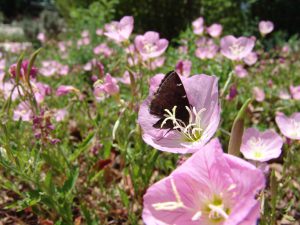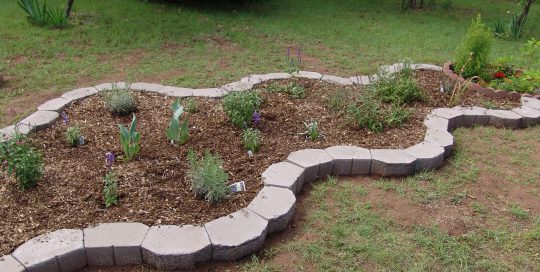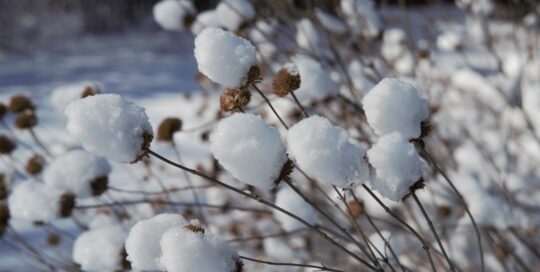Native Plants are the Heart of a Wildlife-Friendly Landscape
Views: 1166

I know I write a lot about native plants on this blog, but they are the heart of a wildlife-friendly landscape. It’s hard to have one without the other. So, with spring on the horizon, I want to encourage you to plant natives this year.
Then: Ugh! My plants are being eaten!
I like to tell this story, because it’s good for illustrating the issue. The first few times I planted coneflowers, I became extremely discouraged because tiny caterpillars kept eating them. I even tried picking the caterpillars off because I wanted the coneflowers to bloom for my butterflies. I became so frustrated I stopped planting coneflowers. This was before I fully understood the inter-relatedness of native plants and insects. I knew milkweed was a monarch butterfly host plant, but that was it. Little did I know at the time, but I was, of course, plucking off the very butterflies I was hoping would visit my coneflowers later that summer.
Back in my caterpillar-plucking days, I fell in love with plants like Russian sage, butterfly bush (Buddleia davidii), and crepe myrtles. They never got eaten by bugs, and they attracted pollinators. They were easy to grow and care for, so they seemed like perfect plants.
Unfortunately, I was missing the bigger picture. Those plants aren’t bothered by bugs because they aren’t natives. Native plants and native bugs, including butterflies and native bees, have evolved together. The native bugs evolved to eat and use native plants to survive. Native plants developed specific strategies to attract native pollinators. Without one, the other struggles. Native plants and native insects need each other.
But it isn’t just insects that rely on native plants. Most native terrestrial birds raise their young on caterpillars and other insects. So, the silvery checkerspot caterpillars eating my coneflowers weren’t just baby butterflies. They were also the food my chickadees, titmice, bluebirds and other backyard birds needed to raise their babies. Native reptiles, amphibians…. the entire native ecosystem ultimately relies on native plants and the animals and insects that feed on them.
Now: Yay! My plants are being eaten!
Thankfully, I eventually realized my mistakes. These days, I rejoice when wildlife eat my coneflowers, sunflowers, and other natives. To me, that’s what it’s all about, supporting that entire system. Sometimes it hurts to see my Carolina wrens plucking the butterfly caterpillars off my black-eyed-Susans, but I know my wrens will have a better chance to successfully raise their brood. My birds have to eat, too.
I’ve also learned that native plants, once established, are pretty resilient. Every year, catalpa moth caterpillars devoured all my catalpa tree’s leaves. At first, I worried my tree wouldn’t survive these brutal feasts, but it just regrew its leaves and seemed healthier than ever, year after year. Even established coneflowers may come back after being eaten to the ground. Many native perennials will.
So, this spring, when you are planning to add new flowers and plants to your landscape, I encourage you to add natives, particularly plants that are native to your region. Your wildlife will benefit, and so will you. Your local natives are adapted to survive in the very conditions you experience. If planted appropriately, it is likely they will require less care, less water, and less long-term maintenance than non-natives. Natives often have deep root-systems or taproots, so they are better able to survive droughts and extreme conditions.
I love my natives, even when they start looking ragged and moth-eaten. I love them because they are being eaten, and I know how rich my landscape will be as a result.
Meet Leslie Miller
Leslie Ann Miller shares 3.5 acres in rural Oklahoma with birds, butterflies and wide variety of animals. She is currently transforming her yard with plantings…
Leslie's Recent Posts

Firescaping 101






